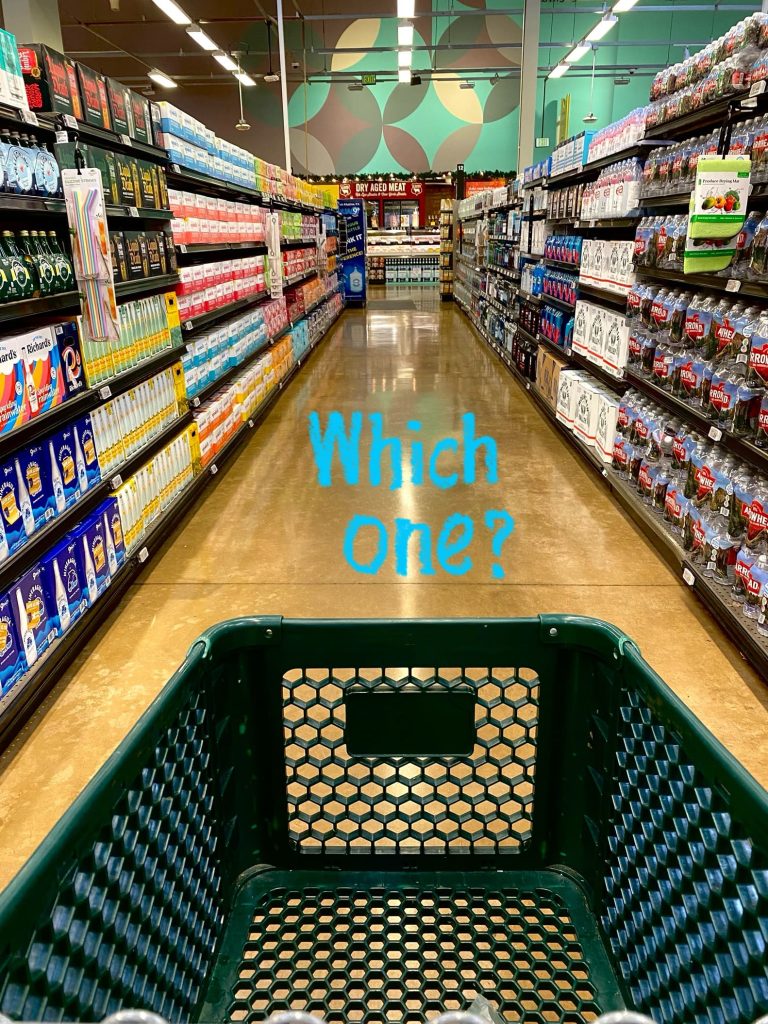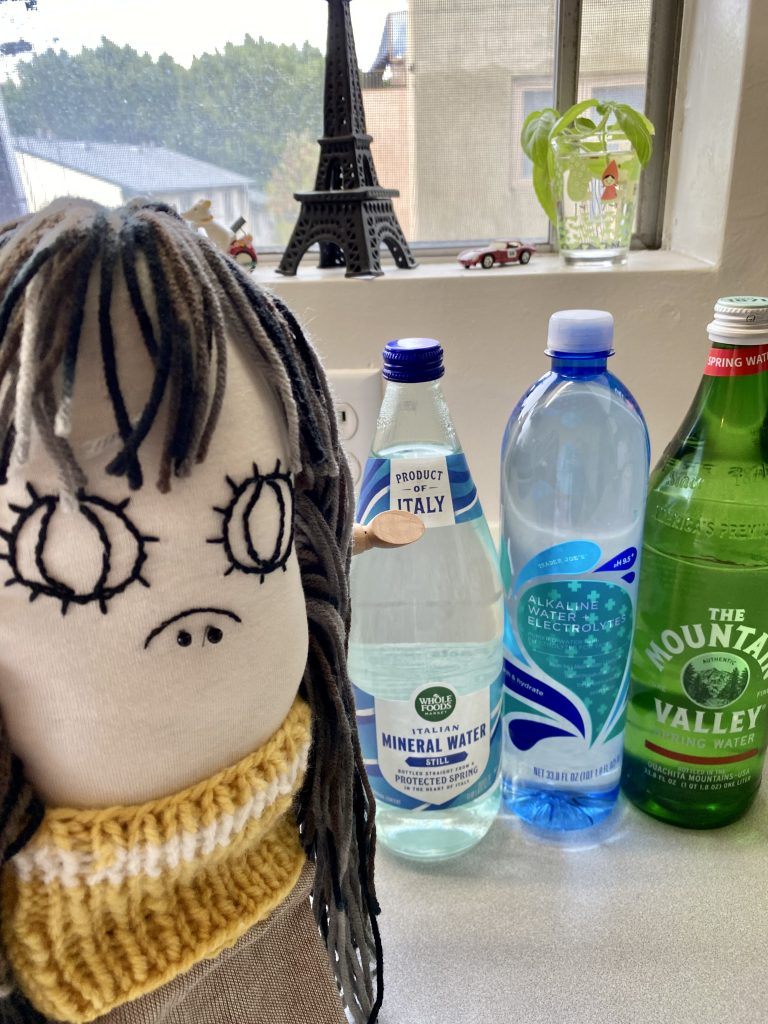
Which Emergency Water is Best for the Kitchen?
どの非常用水が一番いいの?
There are so many kinds of water in the store…..
Which brand of water should I get? I don’t know….
I don’t want to waste my money for emergency water.
How many bottles of water should I get?
You are just starting to set up your emergency stockpile, and you have made (or found) space in your kitchen for water. (If you chose a different room for your first stockpile, other than your kitchen, the system will be the same.) If you have questions or need a recap, check out these previous blog posts, #4 and #5, on finding space for and setting up your stockpile.
At this point, I recommend that you buy as much of your favorite bottled water as you can fit in your space.
この時点では、何でも好きなお水をスペースに入るだけ買ってしまってOK.
While you don’t need to stack water up all the way to the ceiling, don’t worry about buying too much water at this stage. (You can move any extra water to your other locations — which we’ll get to later — or you can drink it. After all, it is your favorite.)
The Federal Emergency Management Agency (FEMA) recommends
1 gallon of water per person per day,
as a general guideline.
Let’s buy at least a three-day supply, but a week’s worth would be better! Remember to save some space for food, which we will discuss in a future post.

Don’t worry too much about which brand of water to buy. Plastic bottles of water are quick and easy to get now, so go ahead!! Tap water is a viable option in an emergency (and is sometimes better than bottled water), but for now let’s focus on bottled water. I explain about water quality in my next post, and if you are not in a rush to prepare, you will be able to follow the instructions in my future posts. So long as you stock water in your home, any kind of water is OK.
In the future, you will drink your emergency water as part of your normal routine, before going shopping. Think of your emergency water in the kitchen as extra water for your daily life. So for now, any brand of water you can get for your kitchen is fine.
You’ll be replacing this water in the not too distant future, and you’ll have an opportunity to get a different brand if you so choose.
Check my post #42 about the Rolling Stock System (First In, First Out, or FIFO).
Many Japanese people use rolling stock to remain prepared for emergencies.
⚠️
Don’t worry too much about which brand of water to buy. So long as you stock water in your home, any kind of water is OK.
どの水が良いかと深く悩まず、今はとにかく水を確保しておくことを優先に。
Try to find another place in your home?
Once you have finished stocking your emergency water in your kitchen, can you try to find another place in your home?
I strongly recommend that you choose a second place in your home for emergency supplies.
To be clear, “in your home,” means somewhere physically connected, like a hall closet, or a basement; as opposed to somewhere outside of your home, like your car, or a shed. Maybe a closet in the bed room? Under the bed? Behind the sofa? (You get the idea.)
お家の中でも一カ所に保管せず、何カ所かに分けて。
If your garage is connected to your home, and is easily accessible, you can use your garage as your second location. Your second location should be in your home so that you know you’ll be able to get to it in an emergency. Your car, a separate garage, or a shed, might be good candidates for a third or a fourth location, but I wouldn’t recommend them as your second place.
Finally, a few thoughts on aesthetics.
Please remember that your emergency stockpile does not need to be pretty, fancy, or well-organized, because it’s for emergencies!!
And you may have noticed that the places I mentioned as examples for storing your emergency stock are all more-or-less hidden away. Psychologically, you and your family don’t need constant reminders of the threat of imminent disaster. It’s best to keep the emergency supplies out of sight. You can rest assured, confident that you are prepared, without undue, stressful, in-your-face, urgency.
いかにも”非常用水を置いている”とわかるような置き方はせず、視野に入らない保管の仕方を。
(クローゼットの中、ソファの裏、ベッドの下など)お家の中でも一カ所に保管せず、何カ所かに分けて。
OK, let’s start and find our next space!!
See you next time.
Remember, “Protect your life by yourself” (自分の命は自分で守る). You need to survive first, and then you need your emergency supply. No matter how well you prepared your emergency supplies, if you die, then all of your preparations will have been for nothing. First and foremost, keep your health up all the time. Build your stamina so that if you need to, you can evacuate as quickly as possible. Stay healthy